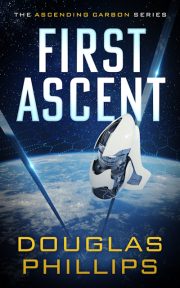Mike Mearls of Dungeons & Dragons: Documenting Imaginary Worlds
 An Interview by Monica Valentinelli
An Interview by Monica Valentinelli
As part of my column about game writing, I am pleased to share my interview with Mike Mearls, the Senior Manager of the Dungeons & Dragons creative team at Wizards of the Coast. If you are not familiar with Mike’s work, he is a game designer and writer who co-designed 5th edition Dungeons & Dragons.
In this interview, Mike and I talk about his thoughts on game writing and his experiences working on Dungeons & Dragons. Be sure to follow Mike on Twitter at @mikemearls
What was the first roleplaying game you worked on? Can you describe your assignment?
The first game I worked on was Unknown Armies, an RPG of modern occult magic released in 1999. I wrote a few small pieces for a supplement called Postmodern Magick. The book was a grab bag of characters, locations, magic items, and so on. I wrote three small pieces, a new ritual, a new variety of spirit prone to possess people, and a pair of characters that GMs could insert into their campaigns.
That project was an ideal starting point, as none of the three assignments were more than a few hundred words. Each assignment was also very focused. I needed to create one thing, rather than take on something more sprawling. The assignment felt easy to manage, and having that first success under my belt helped build my confidence.
How would you define what a game writer is?
It’s a tricky term, because the responsibilities vary between different types of games. The one element of game writing that is unique to the craft, in my opinion, is the idea of the writer as a documentarian of an imaginary world. Gaming writing focuses on the props of a story – locations, characters, creatures, past events – as opposed to characters and plot. Obviously some games require plot, dialogue, and so on, but gaming dwells on the kind of exposition that can make a novel boring.
Of course, little of that exposition appears as-is in a game. Instead, it’s the invisible foundation on which the game stands.
Do you feel the value of game writing lies in the rules, setting, or both?
It’s easy to say both, but I think that focusing on setting is a better path toward a career in game writing. Mechanics are important, but the stories inspired by interesting worlds and compelling characters are the things that stick with people for decades after they’ve played a game.
In your mind, what do you feel the distinction is between a game writer and a game designer?
A designer must consider far more boring details than a writer. Game writing is all about the big ideas in a game and how they fit together. That requires detail to ensure everything meshes, but a world or character can tap into a gamer’s imagination to fill in the details.
You can’t afford that kind of gap in mechanics. An unclear mechanic creates confusion and frustration. It’s much more of a lawyerly approach to writing. You can’t cover every possibility, but you have to hit enough of them to keep the game moving.
Do you have any comments on the new SFWA rules geared toward admitting game writers?
I think it’s great that SFWA is moving to include game writers. Gaming is only going to grow, and there’s plenty of opportunities for writers to move into that market. By the same token, game writing is still in the dark ages when it comes to developing skills, building expectations of professionalism from both writers and publishers, and creating accessible networking opportunities. I hope SFWA can help fill in some of those gaps.
The rules themselves seem reasonable, though I think a higher proportion of game writers are salaried employees compared to traditional publishing. It would be nice to find a way to include such creators.
Switching gears, what does a typical Dungeons & Dragons assignment look like? How long is it?
It depends on how much experience a writer has working with us. As we work with writers, we give them larger assignments with more autonomy.
For a new writer, you can expect an assignment along the lines of a short adventure, a half dozen or so new monsters, or something else that is fairly compact and limited in scope. We try to bring in new writers gradually.
On the opposite end, someone with a lot of experience with D&D might be tasked with writing 100+ pages of a campaign that spans 10 or so levels of play.
Most assignments come with outlines that lay out the key, creative beats a manuscript must hit. For instance, we release a major new adventure each year that ties into our video games, board game, and other products. It’s important that we have consistency between them. If you look at an adventure like Storm King’s Thunder, our latest adventure, we need to make sure that the key villains and most important dungeons are prominent in the manuscript.
Do you pay your writers differently depending upon the project? If so, why?
We tend to vary how we pay writers. For adventures, we pay by the word and have a clear outline of what the adventure needs to contain. For mechanical design, such as new spells, we tend to pay by the hour or via a single, lump sum.
An adventure usually has more stringent, specific requirements in terms of the characters, locations, and key plot elements it must hit. For something like new spells, we usually ask a writer to generate a ton of short concepts, which we then winnow down to the ones we want to see for a product. The process is more freeform and relies more on work that hits the cutting floor.
With that in mind, walk us through the writing process for a typical Dungeons & Dragons supplement.
I’ll use an adventure as an example. It typically starts with a design guide that features the key villains, dungeons, and monsters for a story line. Our internal team of writers and artists concepts out the big picture concepts that drive a product. We then share that material with writers and provide an outline of the material we need.
At this stage, we might ask writers to provide an outline for their section, especially if we provide space to expand on our starting concepts and ideas. Once that is approved, we work out a schedule that has a writer turning in the manuscript in thirds. This incremental turnover makes it easier for us to spread out work on reviewing the writing and providing feedback.
The second draft follows the same process, with a writer working through editorial notes and sending the draft back in thirds.
If everything goes well, we then ask the writer to prepare notes for maps, art necessary for the manuscript, and so on. We review that, bounce questions back to the writer for anything that is unclear, then pass it along to our art director.
Tell us more about yourself and your work as a games writer. What were some of your favorite books to work on?
I never thought of myself as a writer. I tried my hand at fiction and was bad at it. I moved into game writing for the fun of it, and didn’t come to see it as a career until a few years later. I joined Wizards in 2005, after working as a full-time, freelance writer for 4 years.
I love working on books that detail that mythology and psychology of fantastical creatures and cultures. I like walking the line between making something feel credible and believable, while at the same time trying to inject magic and wonder into it. I see plausibility as the glue that brings a world together. It keeps a player or reader engaged so that the experience can be immersive. When you’re stuck questioning the plausibility of a character’s actions, or a fictional society’s structure, that pulls you out of the flow and reminds you that you’re only playing a game, not experiencing a world. It’s a fun challenge to take on.
Thanks for taking time out of your busy day to talk about writing for games. If you had one piece of advice to give to a writer who wanted to write for Wizards of the Coast, what would it be?
Start small with our DMs Guild program. The Guild is an online marketplace that allows writers to use the D&D IP to create their own PDF products for use with Dungeons & Dragons. It’s a good way to become familiar with the process of building an RPG product, and we use the Guild as a place to recruit new writers.
•••
Monica Valentinelli writes stories, games, essays, and comics for media/tie-in properties and her original works from her studio in the Midwest. She’s a former musician of 20+ years and a graduate of the University of Wisconsin-Madison’s Creative Writing program who now writes full-time. Best known for her work in games, Monica is currently the developer for Hunter: the Vigil Second Edition, and was the lead developer/writer for the Firefly RPG line based on the Firefly TV show by Joss Whedon. Her new book The Gorramn Shiniest Dictionary and Language Guide in the ’Verse recently debuted from Titan Books. Watch for her co-edited anthology Upside Down: Inverted Tropes in Storytelling to debut from Apex Book Company in December 2016.


